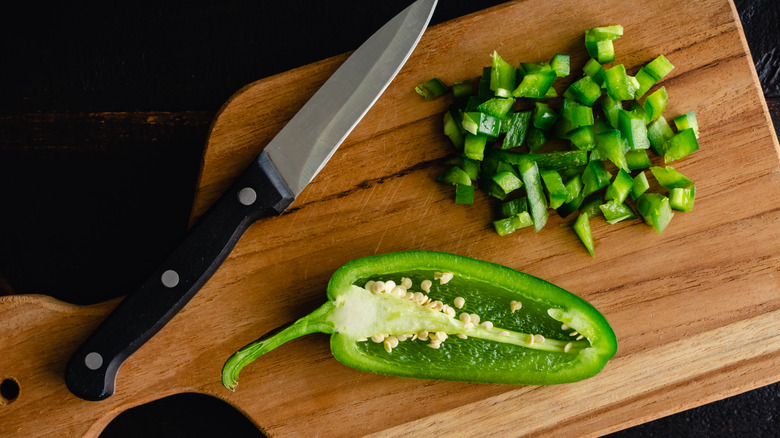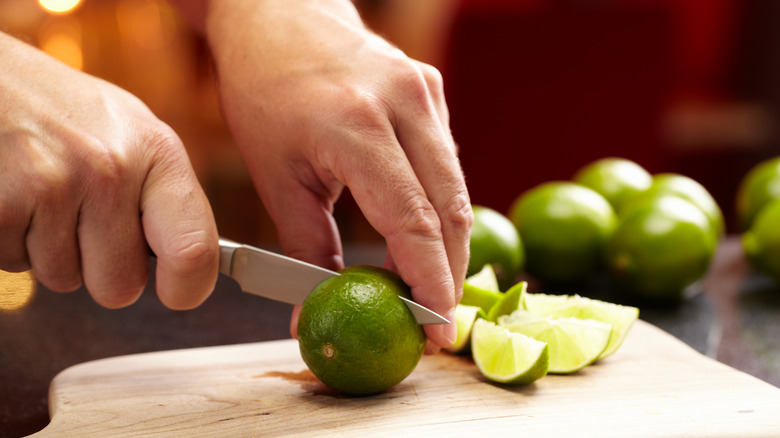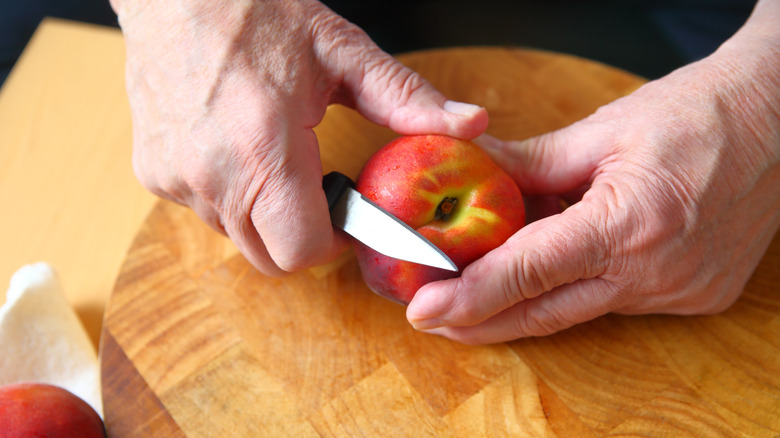You Think You Don't Need A Paring Knife, But Here's Why You Do
You love your chef's knife and use it for everything within reason: cutting meat, slicing fruits and vegetables, mincing herbs, and a dozen other tasks. Whenever anyone mentions a paring knife, you roll your eyes and scoff at the idea of buying a relatively tiny piece of cutlery when you have one of the best chef's knives on the market. In the culinary world, however, paring knives are known as one of the three necessary blades in any kitchen, with the other two being the bread knife and the chef's knife. Considering that each type of knife has its uses, what's so special about the paring knife that you should own one?
Well, the distinctive usefulness of the paring knife comes mostly from its size. With a blade typically between 2.5 and 3.5 inches long and a handle roughly the same length, a paring knife is the smallest knife you'll find in the kitchen. That's not a knock; it's a compliment. A knife this small is a versatile tool that allows you a degree of delicacy, finesse, and precision not possible with a larger implement. Once you see all the distinctive ways a paring knife makes itself useful, you'll rethink your position on this pint-sized wonder of the cutlery world.
What is a paring knife, and what is it for?
Depending on the shape of its blade, the paring knife is essentially a mini chef's knife (with a spear-shaped tip) or a mini santoku (with a sheep's foot tip). There's also a bird's beak-tipped paring knife with a sharp, down-turned edge that's particularly good at digging into nooks and crannies.
Despite looking like a pared-down version of a chef's knife or a santoku knife, it would be a mistake to try using a paring knife exactly as you'd use these large, nearly-all-purpose blades. The size and lightness of a paring knife makes it the wrong tool for cutting hard vegetables like squash or sweet potatoes. If you have to push hard and forcefully, you need to switch to a chef's knife. The right way to use a paring knife is to capitalize on its size rather than try to work around it. Thus, paring knives are perfect for small quantities of small, delicate ingredients that need a light touch or for techniques that require nimble, fine-grained work with a tool that functions as an extension of your hand.
Uses for a paring knife
Perhaps the most famous use for a paring knife is peeling the skin from fruits and vegetables. In fact, a paring knife is preferable to a vegetable peeler for certain foods. The delicate flesh of kiwis, for instance, could easily be decimated by a peeler, while a paring knife yields clean results.
Paring knives have other uses with fruits and veggies beyond peeling. Their size and wieldiness makes them the go-to tool for removing cores, segmenting small citruses like kumquats, and hulling (i.e. removing) the tops of fruits such as strawberries. And when faced with an imperfection on an otherwise beautiful piece of produce, the paring knife can easily hone in on the blemish. Just make sure you keep your knife sharp, as a dull blade risks hacking away too much good flesh.
As we mentioned, precise tasks with small ingredients are better handled with a paring knife than a chef's knife. Better to mince small quantities of herbs, garlic, or shallots with a paring knife than a bigger blade — you'll feel (and be) more in control. Additionally, you'll appreciate that level of control when deveining shrimp or removing fat, bones, or tendons from meat. Decorative work is also the job of the paring knife. Try cutting out heart-shaped cucumbers or tomato roses with a big ol' chef's knife, we dare you.


